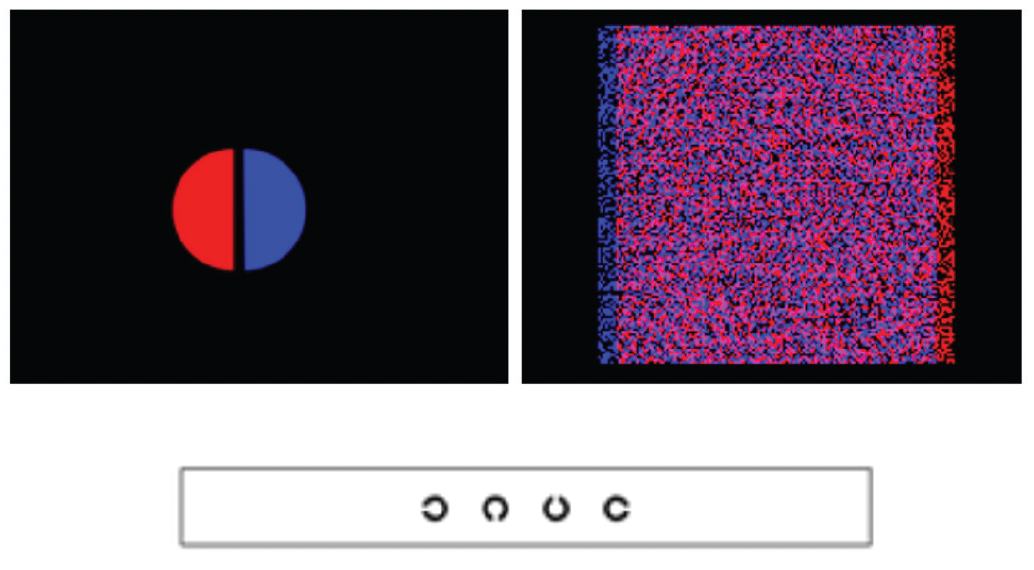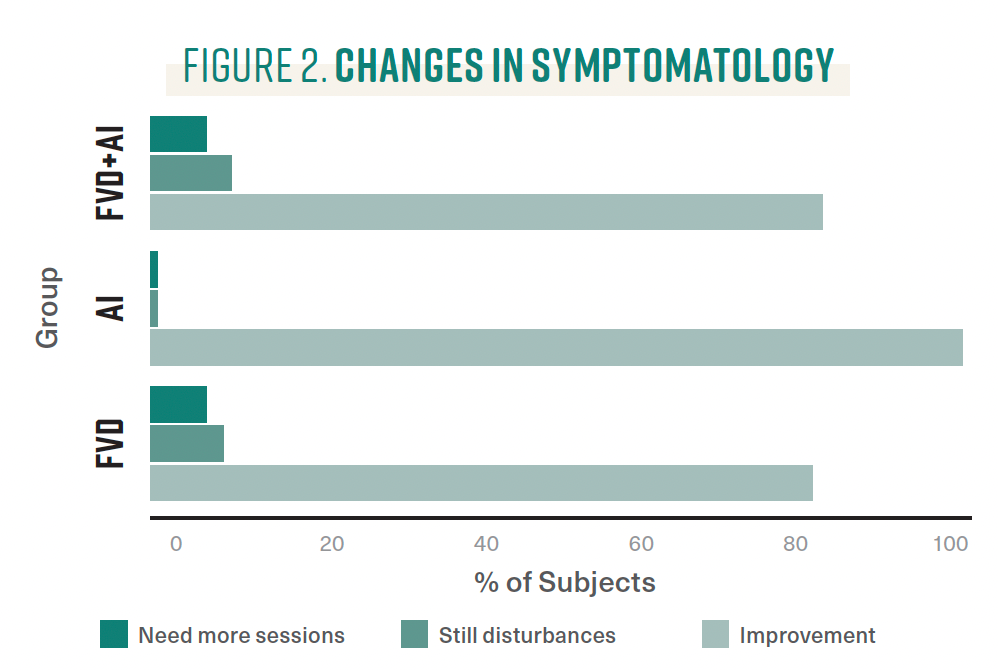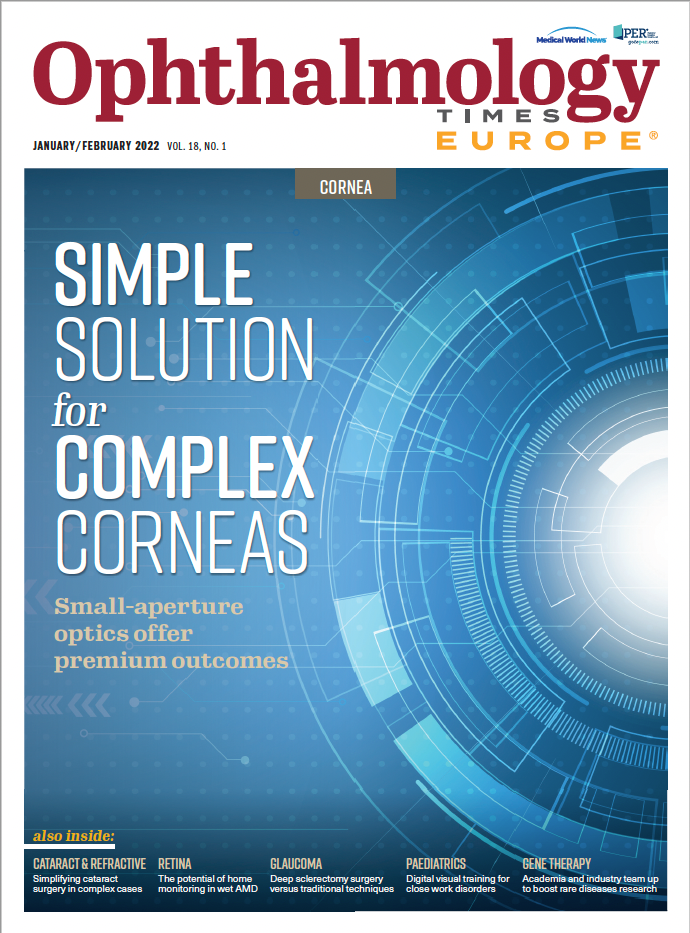Digital visual training helps treat disorders associated with close work
Computer software platform provides home vision exercises to overcome asthenopia.

Computer vision syndrome (CVS) is a group of eye problems associated with computer and mobile phone use.1 In this digital era, people spend much of their time looking at a screen.2
The number of people with exposure to digital media is growing exponentially—there are more than 4 billion Internet users in the world—and thereby the prevalence of CVS. One of the most common manifestations of CVS is asthenopia.3
The term is derived from the Greek words asthen-opia, meaning weak eye condition. It manifests as nonspecific symptoms such as fatigue, headache and pain in and around the eyes, burning of eyes, blurred or double vision. It is brought on by concentrated use of the eyes for tasks such as reading, computer work or close visual work, activities that cause tightening and spasm of the ciliary muscles.4-6
Apart from refractive errors, binocular and accommodative vision anomalies are among the most common visual disorders in children.7 Asthenopia is proving to be a major problem in school-age children, especially with the new norms of virtual classes and with constant and continuous near work. It is imperative that a complete binocular vision assessment is made in these children, with the prescription of a targeted therapy to ensure relief from symptoms.
People who do prolonged near work might have accommodation insufficiency or accommodation infacility, two conditions that cause blurred near vision, discomfort and strain; fatigue; and difficulty with attention and concentration whilst reading.8
Prolonged near work can also have a significant effect on binocular stability, with the potential development of convergence insufficiency,9 characterised by exophoria at near, increased near point of convergence (>10 cm), low fusional convergence amplitude (<15–20 prism D) and significant symptomatology.10 Various studies have proved convergence insufficiency and accommodation infacilityto be leading causes of asthenopia.11
Despite the symptomatic evidence, there has been little research into how to improve the visual symptoms associated with prolonged near work and/or digital technology. Specifically, to date, no study has examined the effect of vision training on patients with vergence or accommodation issues. For this reason, our research group recently analysed the change in asthenopia score after vision training in subjects with CVS and associated accommodative or binocular disorders.
Study design

A total of 76 subjects with symptoms of asthenopia, eyestrain and difficulty focusing after working on computers or following near work were recruited. The mean ± standard deviation age was 23.3 years ± 12.3 years; 58% of those recruited were women and 32% men.
Patients with any ocular pathology or who had undergone any previous vision training were excluded. Comprehensive examination of the enrollees included objective and subjective refraction followed by anterior and posterior segment evaluation.
Diagnostic tests were performed using a new validated software package, Bynocs, which allows the measurement of different aspects of visual function (visual acuity, contrast sensitivity, phoria, fusional vergences or stereopsis) as well as providing specific types of visual exercises. This cloud-based software for assessment and management in binocular vision disorders requires the use of a computer or laptop with Internet connectivity, and a pair of anaglyph glasses and flippers to perform the tests.
The software has several advantages over conventional visual function tests and training, such as the use of engaging activities and real-time control of compliance, allowing successful home-based visual assessment and treatment. Tests include measurement of fusional divergence (break and recovery point), fusional convergence (break and recovery point) and accommodative facility (cycles per minute).
Figure 1. Bynocs screens. Top right, measurement of phoria; top left, fusional vergence measurement and training; bottom, optotypes for accommodative training.

The presence of asthenopia was confirmed with the Asthenopia Symptoms Survey, with calculation of the asthenopia score.Each subject was given ten sessions of therapy using the software (Figure 1).Fusional divergence exercises were repeated five times in each of the first five sessions and three times in each of the next five sessions.
Fusional convergence exercises were repeated five times in each of the first three sessions, seven times in each of the next three sessions, then ten times in each of the last four sessions. Each of the ten sessions also included 4 minutes of accommodation exercises.
Subjects were reviewed in the clinic 10 days after finishing the therapy, and diagnostic tests of fusional divergence amplitudes (break and recovery point), fusional convergence amplitudes (break and recovery point) and accommodation facility were conducted.
Three groups were created after the initial visual assessment:
- Fusional vergence dysfunction (FVD) group (subjects with normal accommodation and vergence response impairment);
- Accommodative infacility (AI) group (subjects with normal vergence and a reduced level of accommodative facility); and
- Fusional vergence dysfunction with accommodative infacility (FVD+AI) group (subjects with impaired vergence and accommodation).
The Shapiro–Wilk normality test showed the data variables to be normally distributed. Parametric statistical tests were applied for data analysis.
Results
Overall mean asthenopia score significantly changed from 20.3 ± 3.1 before therapy to 11.7 ± 2.8 after therapy (P < 0.001). Specific findings in each of the three groups are described as follows.
FVD group (n=31)
In this group, statistically significant improvements were observed after therapy in fusional divergence break point; fusional divergence recovery point; fusional convergence break point; fusional convergence recovery point; and mean accommodative facility. After finishing therapy, most subjects (84%) reported an improvement in symptomatology, although three subjects continued to report disturbances despite an improvement in the visual parameters evaluated.
These patients were carefully re-examined to see if another condition might be the cause for the residual disturbances. The remaining two patients experienced a mild improvement, and more sessions of training were prescribed (Figure 2).
AI group (n=6)
In this group, no significant changes were found in the parameters characterising the vergence response, but accommodative facility improved significantly with training (4.1 ± 2.2 cycle/min vs 7.9 ± 1.5 cycle/min; P = 0.008). All subjects experienced a significant improvement in symptomatology (Figure 2).
Figure 2. Changes in symptomatology in the three groups of subjects. (All images courtesy ofMs Faiza Bhombal, Mr MdOliullah Abdal, Dr Gul J Nankani and Dr David P. Piñero)

FVD+AI group
The FVD+AI group demonstrated significant improvements in all the variables evaluated. Symptomatology improved after therapy in most subjects (85%), although four subjects continued to experience disturbances despite an improvement in the visual parameters evaluated. These patients underwent careful re-examination to see if another condition might be the cause for the residual disturbances.The two remaining patients experienced a mild improvement, and more sessions of training were prescribed (Figure 2).
Conclusions
In the presence of CVS, it is important to conduct a complete accommodative and binocular vision assessment because an anomaly in these aspects can contribute significantly to symptomatology compatible with CVS.If a binocular or accommodative disorder is detected, it can be managed successfully with visual training.
The new software platform described in this article can be helpful for this purpose, facilitating a significant reduction of asthenopia score and a significant improvement in the subject’s binocular and accommodative abilities. More studies are needed to further investigate the efficacy of visual training therapy with this online platform.
Faiza Bhombal, B. Optom
MdOliullah Abdal, M. Optom, Fellow LVPEI
Gul J Nankani, MD
David P Piñero, PhD*
*Corresponding author
E: david.pinyero@gcloud.ua.es
Ms Bhombal is optometrist and contact lens consultant at the Krishna Eye Centre, Mumbai, India, where Mr Abdalis head of the Department of Optometry and Hospital Administration and Dr Nankani is an ophthalmologist. Dr David P Piñero is researcher and lecturer in the Department of Optics, Pharmacology and Anatomy at the University of Alicante, Spain. Mr Abdal is co-founder and director of Bynocs. The remaining three authors declare no potential conflicts of interest.
References
1. Dain SJ, McCarthy AK, Chan-Ling T. Symptoms in VDU operators. Am J Optom Physiol Opt. 1988;65:162-167.
2. Rosenfield M, Howarth PA, Sheedy JE, Crossland MD. Vision and IT displays: a whole new visual world. Ophthal Physiol Opt. 2012;32:363-366.
3. Jaiswal S, Asper L, Long J, et al. Ocular and visual discomfort associated with smartphones, tablets and computers: what we do and do not know. Clin Exp Optom. 2019;102:463-477.
4. Rosenfield M. Computer vision syndrome: a review of ocular causes and potential treatments. Ophthal Physiol Opt. 2011;31:502-515.
5. Sheedy JE, Hayes JN, Engle J. Is all asthenopia the same? Optom Vis Sci. 2003;80:732-739.
6. Portello JK, Rosenfield M, Bababekova Y, et al. Computer-related visual symptoms in office workers. Ophthal Physiol Opt. 2012;32:375-382.
7. Hussaindeen JR, Rakshit A, Singh NK, et al. Binocular vision anomalies and normative data (BAND) in Tamil Nadu: report 1. Clin Exp Optom. 2017;100:278-284.
8. Iwasaki T, Nagata T, Tawara A. Potential preventive effects of a new visual intervention for accommodative insufficiency and asthenopia due to sustained near task. Ophthalmologica. 2012;228:181-187.
9. Teo C, Giffard P, Johnston V, Treleaven J. Computer vision symptoms in people with and without neck pain. Appl Ergon. 2019;80:50-56.
10.Cacho-Martínez P, García-Muñoz Á, Ruiz-Cantero MT. Is there any evidence for the validity of diagnostic criteria used for accommodative and nonstrabismic binocular dysfunctions?J Optom. 2014;7:2-21.
11. Nunes AF, Monteiro PML, Ferreira FBP, Nunes AS. Convergence insufficiency and accommodative insufficiency in children. BMC Ophthalmol. 2019;19:58.

